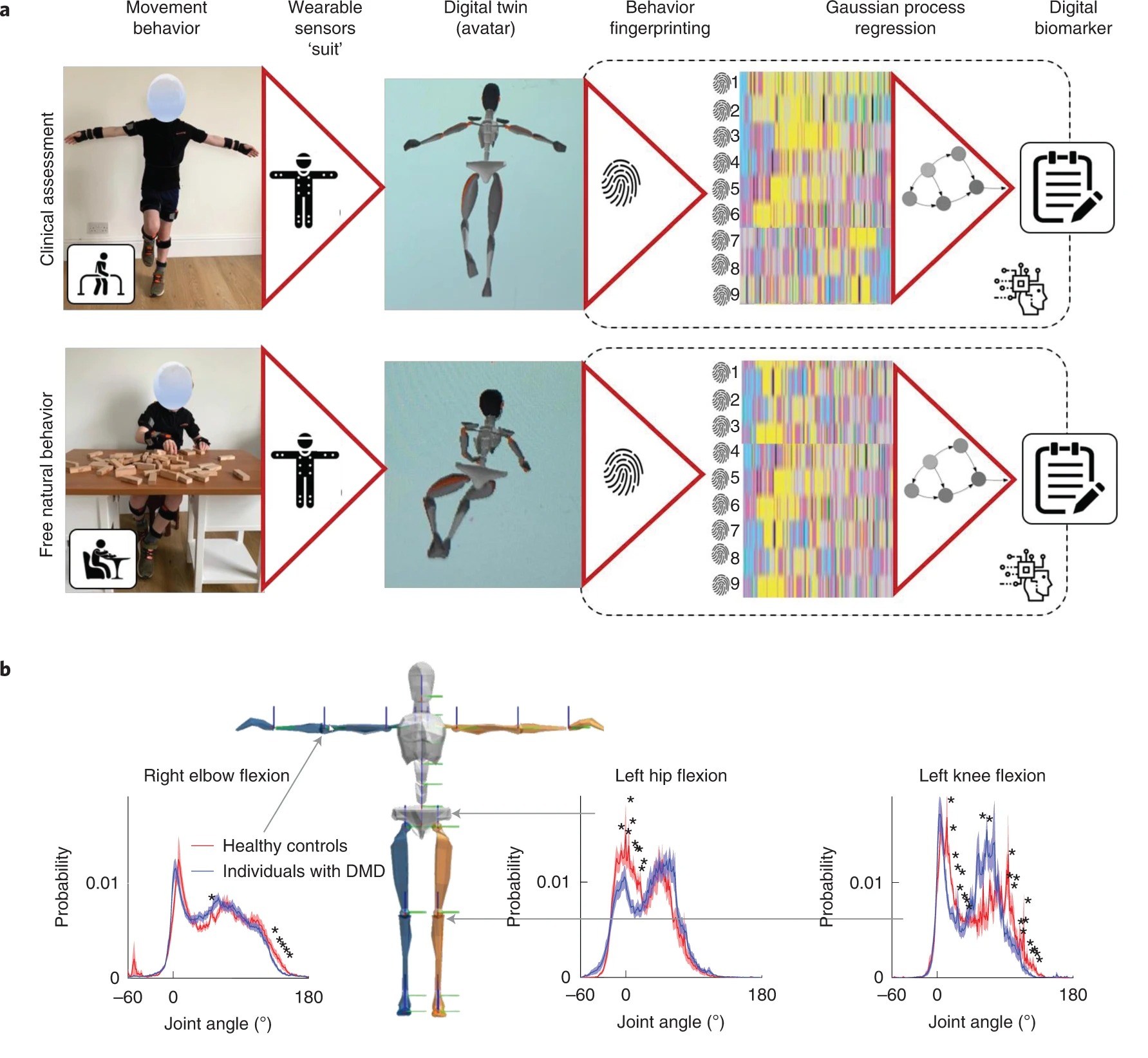Published on
Updated
Reading 2 mins.
Inspired by the motion capture used by the filmmakers of Avatar, a new technology would make it possible to detect body movements with precision. Applied to certain diseases, it enables early assessment of their progression, the effect of treatments and the prediction of their development.
Many diseases cause tremors and involuntary movements – sometimes hardly perceptible. To better spot them, a team of artificial intelligence experts and clinical researchers has developed a new system capable of monitoring the progression of movement disorders. The results of these two studies are available in the journal NatureMedicine.
Assess and predict the progression of movement disorders
In these two studies, the researchers used their motion capture technology combined with artificial intelligence on patients with Friedreich’s ataxia (FA) and Duchenne muscular dystrophy (DMD) – two diseases characterized by movement.
This is how they found that their system quickly spotted participants’ movements. It turned out to be much faster and more precise than other current techniques.
Concretely, during the tests, the device could analyze the gravity of the movements twice as quickly “than the best doctors” specify the scientists.

The system was thus able to assess any deterioration of the disease in a patient, but also to predict the future progression of the disease.
“Our new approach detects movements that humans cannot spot. She collects massive amounts of data about a person’s whole body movements, more than any neurologist.”, said Professor Aldo Faisal of Imperial College, one of the scientists behind the idea. Therefore, this system allows “improve the diagnosis and follow-up of patients” but also “to make accurate predictions“, he concludes.
Towards new treatments?
Because it makes it possible to assess the progression of the disease early and to predict its evolution, this discovery should make it possible, on the one hand, to better assess the treatment and to adapt it more quickly if it is not sufficient. On the other hand, this system could be used to evaluate new drugs by objectively judging its impact on movement disorders.
“We believe this technology holds promise for many diseases and will help us develop new treatments faster, at lower cost and with greater precision..”
Faced with this innovation, Professor David Grabli, neurologist, is enthusiastic. He finds the tool conceptually interesting in terms of technological capability:
“This technology is interesting because it meets a fairly basic need for biomarkers of the progression of degenerative diseases. Indeed, clinical markers often arrive too late (neural loss, structural modification of the brain), whereas these markers, conversely , make it possible to predict the evolution of diseases. It is therefore an evaluation tool which is theoretically innovative in its construction, which makes it possible to consider trials over shorter periods of time and which responds to a real challenge, even if it does not solve the way in which one treats the symptoms and the effects of the disease”, admits the expert.